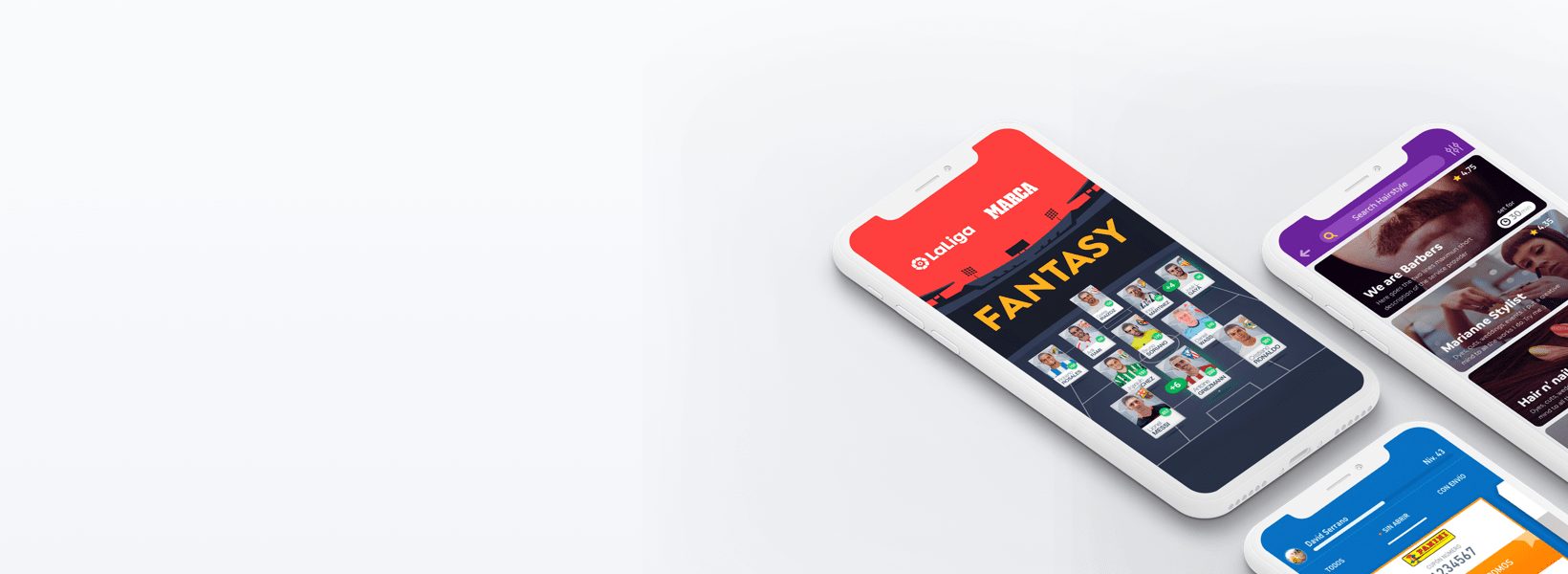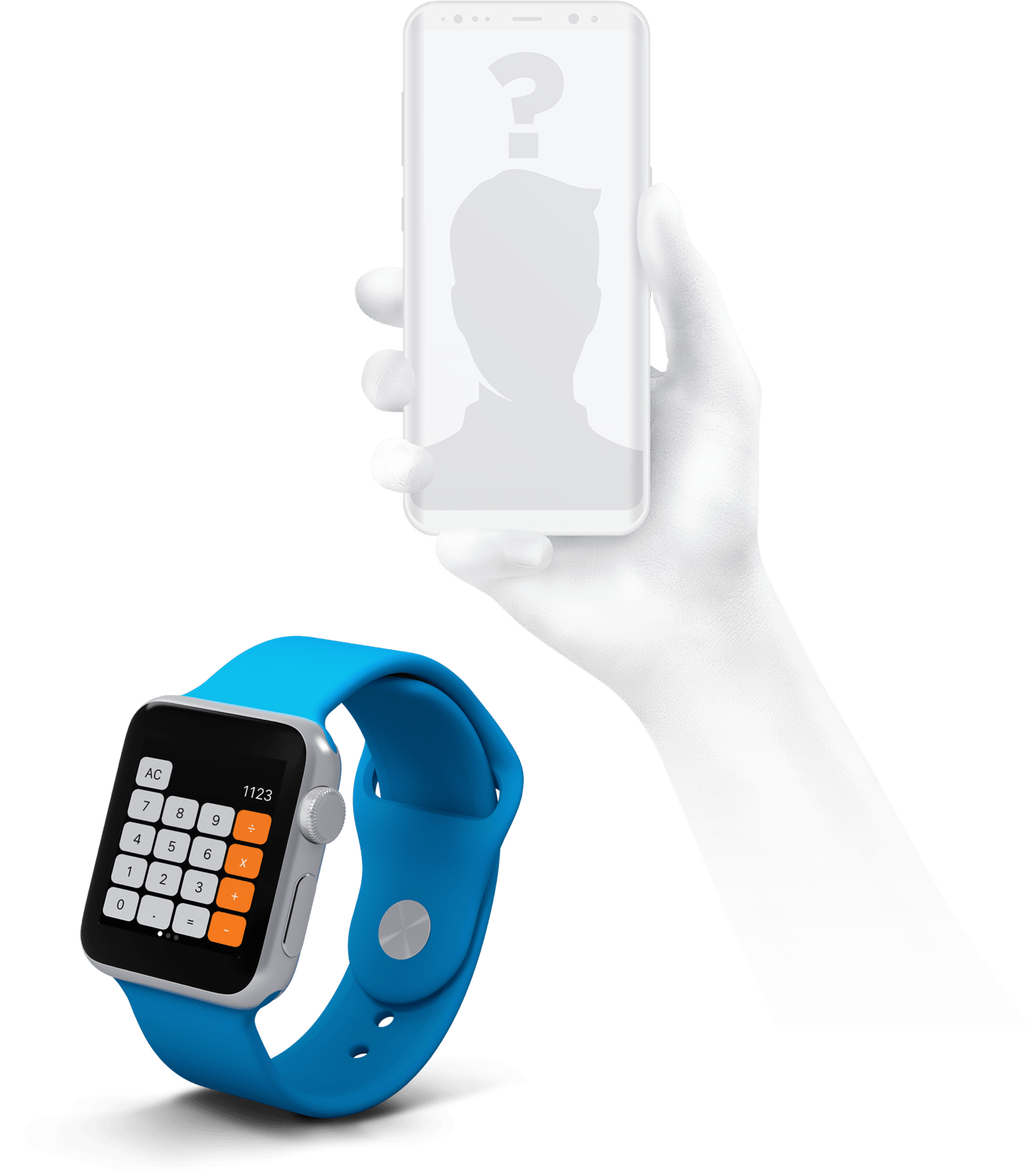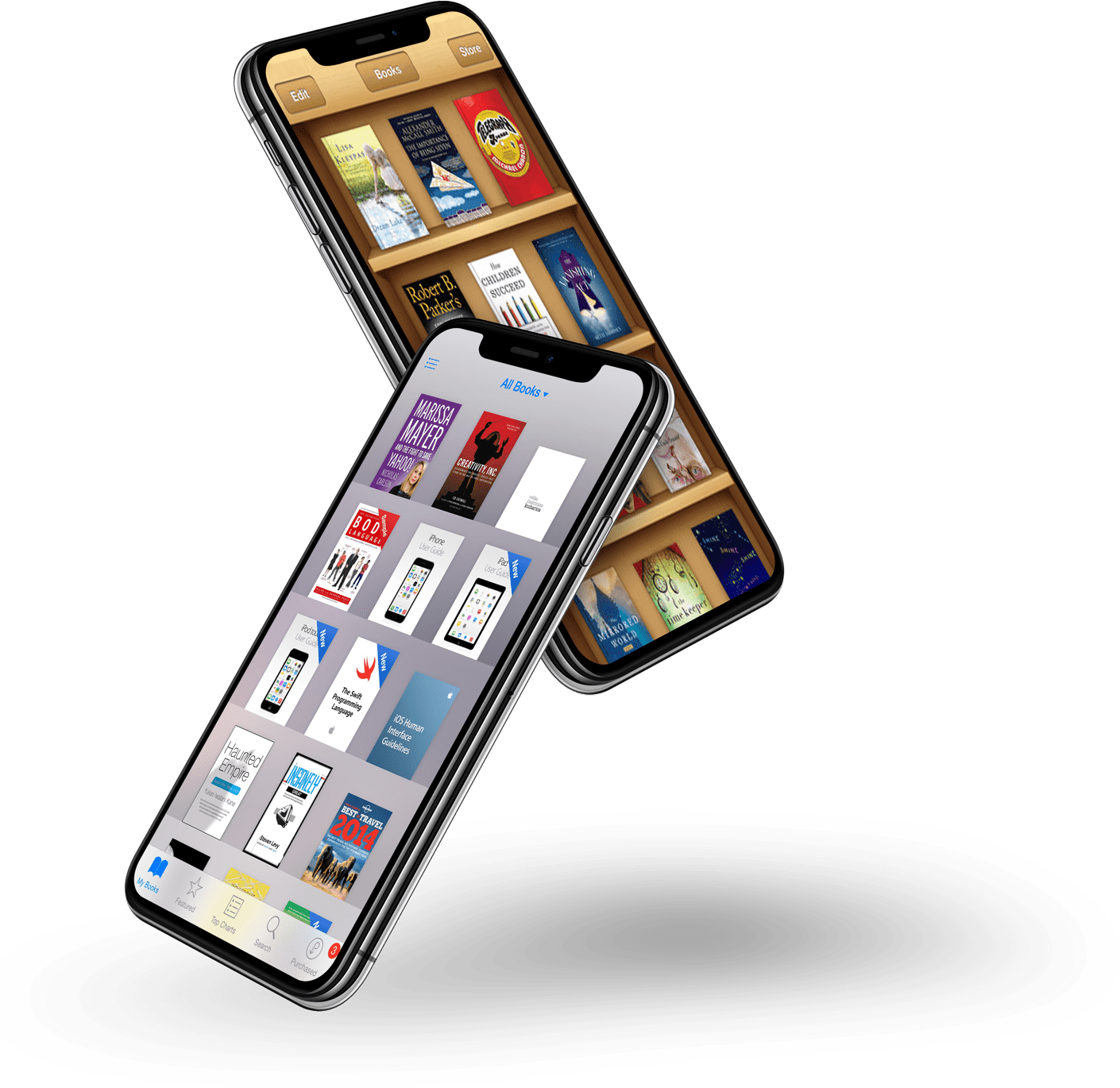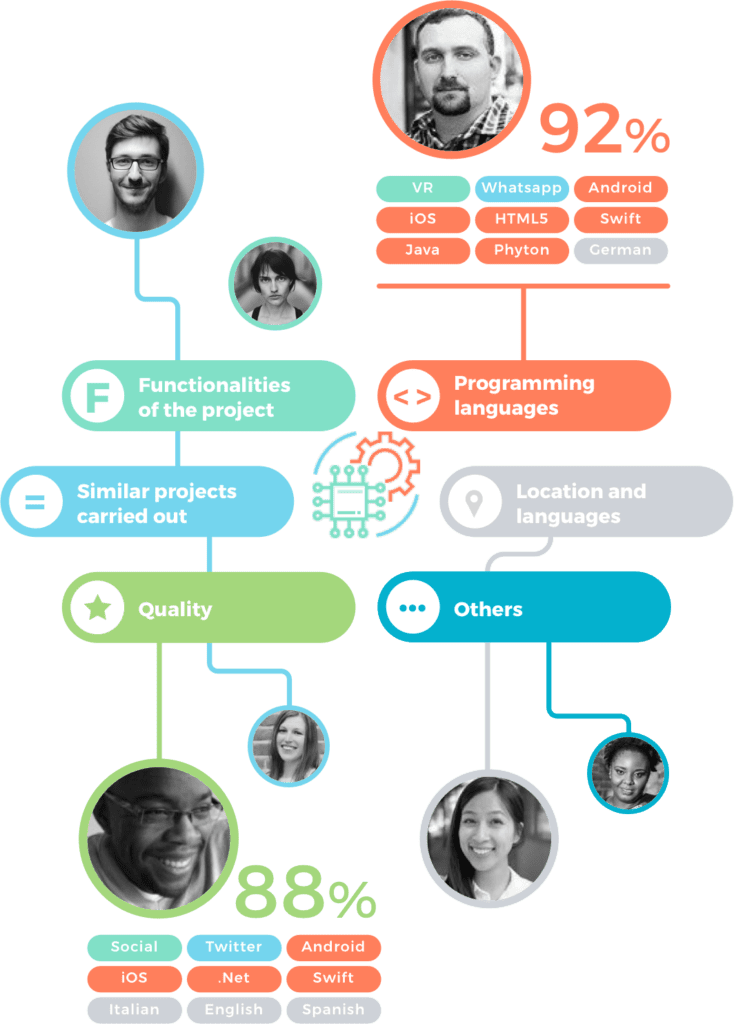
How to create mobile apps? Step by step guide (2023)
Do you want to learn how to create mobile apps but you don´t know where to start?
It is difficult to find someone between 18 and 65 who doesn’t have a smartphone or use mobile applications in their day to day life. We all have our individual mobile needs, so each person has a need for different applications.
And while there are millions of mobile applications on the app stores, the application you need may not be there. This is precisely how app ideas are born; but it also bring doubts: How can I create mobile apps if I have no idea how to programme apps or no experience in mobile app development?
To create your own app you do not need to know how to write a line of code. With Yeeply you can outsource the development of your app. You just have to tell us what your app idea is and we’ll find app professionals needed to carry it out. Shall we get started?
- How to create mobile apps? Step by step guide (2023)
- Considerations to create a successful app
- Creating mobile apps: Design
- How to Create a Mobile App in 7 Steps
- Certified Professionals mobile apps developers
- FAQs
- Are you ready for your first project?
Considerations to create a successful app
If you’ve got to this point it is because you already have an app idea more or less clear in your mind. But you have probably not yet defined a target audience or do not know how to monetize it. Consider these key points for any app project:
What kind of mobile application is it?
Creating a corporate application is not the same as creating an m-commerce or a mobile game. You’ll have to clearly define what your mobile application will consist of. This will define the type of app developers and designers you will need, and even the budget of your project.
Which audience is it for?
The target audience for your mobile application is key to identifying your business model.
Have you studied the market?
The global mobile application market size was valued at USD 206.85 billion in 2022 and is expected to grow at a compound annual growth rate (CAGR) of 13.8% from 2023 to 2030, so there is clearly a big market.
You have to do a market study and analyze your competition if you are to create an app that succeeds. It is very likely that there is already a similar app on the market, but your challenge is to find your niche in the market and differentiate yourself.
How are you going to monetize your app?
Not all mobile applications are created to generate an economic benefit, there are some that claim to improve customer loyalty and brand image. Although as it is a commitment to create an app and invest enough money in it, it is better to have a monetization strategy to recover at least the amount invested.

Calculate your budget: how much does it cost to create a mobile app?
As you know, creating apps is expensive. The initial economic investment required to realise our app idea is quite high, and will not be recuperated until we have attracted a lot of users.
Still, the cost of development depends heavily on the features of your mobile application. Also the type of app – native, hybrid or multiplatform- development directly influences the final cost of your app development.
But the problem is that you have no idea how much it could cost you to develop the app you have in mind, right? We make it easy. We have a calculator which gives you an estimate in real-time before publishing your project. Have you not tried it yet?
Make a sketch of the mobile app
Although application developers are used to dealing with different app designs they generally request all the information before starting to create an app, it is best to get ahead. Be prepared with a sketch or an initial prototype of your app so that developers and designers of mobile applications can start working on your proposal as soon as possible.
You do not need a final app design, but you can do it on paper to give an idea of how to run the app. If you wish, you can create a simple mockup using any of these tools for prototyping apps like Justinmind, Concept Inbox o Invision.
Types of mobile applications
Native applications
We have focused this guide on how to create an app in native development. These are the apps developed and designed for each (Android and iOS mostly) operating system.
Web Apps
These type of apps are programmed in HTML5, CSS y jQuery Mobile, among others. The operation of these applications is well within their limitations. They have restricted access to certain features of the mobile device. The most widely used framework for this type of development is PhoneGap. Looking for multiplatform developers with experience in PhoneGap is a good idea.
Interpreted apps
In this case, the mobile application is programmed, interpreted and is then translated into the terminal programming language. This type of programming allows very rapid development for the developer of apps and facilitates access to different platforms with less effort.

Creating mobile apps: Design
We want to make this section your guide to creating an app, and so it is impossible not to stop and talk about your app design. If you do not have the capacity to do the app design yourself, remember to inform us so that we can also find a designer for your app project.
Remember that the success of the project also depends on the app design. This means that a bad design will affect the usability and the user experience and as a result it will be much more difficult to make it profitable and gain loyal users.
Trends in app design. What to choose when creating applications?
App design, or the equivalent to app design, web design, is changing, and it is largely influenced by app trends in mobile aesthetics.
Currently in design we find two very powerful currents. We talked about the conflict between the flat design and deep layout or skeumorphism. What is best for my app design? First let’s see what each one of them is so you can get started on your mobile app development.
Flat design
This type of app layout is characterized by a clear design and very transparent lines, which follow a strict grid. Minimalist designs have caught on in app development as well as in web development. Proof of this can be seen in that iOS 7 brought flat design to the iPhone and iPad. An aesthetic that designers were gradually choosing for iOS apps, but also spread to Android app design.
Skeuomorphism or complex design
Apps designers have seen growth in this design in the past year. This is a trend in mobile design that Apple has been taking, moving from a simpler design to a more complex app design. In this app design we see the use of realistic textures. This type of design is more intuitive and friendly to user’s eyes. Having a user ‘friendly’ design also positively affects the ‘engagement’ that the mobile user feels towards it.

How to Create a Mobile App in 7 Steps
1. Ideation and Research.
- Identify a Problem: Successful apps are those that address specific needs. Start by identifying gaps in the market or problems you can solve with your mobile app.
- Market Research: Investigate competitors, understand your target audience, and study market trends. This research will shape your app’s concept and design to ensure it’s competitive and appealing.
- Define Your App’s Goals and Objectives: What do you want your app to achieve? Whether it’s convenience, entertainment, or providing a unique service, this decision will guide your creation process.
2. Planning
- Sketch Your Idea: Draft the basic look and functionalities of your app. It doesn’t have to be professional; it’s just a visual representation to convey your concept.
- Create User Personas: Develop profiles representing your typical users, outlining their demographics, preferences, and behaviors to help tailor the app’s design and features.
- Select a Monetization Strategy: Will your app be free, offer in-app purchases, or have a subscription model? Planning this early will help in the app’s structural design.
3. Design Phase
- Wireframing: Create a detailed skeleton (a wireframe) of your app, showcasing all elements and features. Tools like Balsamiq, Figma, or Adobe XD can help in this process.
- Prototype: Develop a clickable prototype to simulate the user experience and functionalities. It helps in pre-testing the app design and flow.
- UI/UX Design: Focus on creating an intuitive and aesthetically appealing interface that enhances user experience and engagement.
4. Development:
- Choose a Development Approach: Decide between native, web, or hybrid mobile app. This choice will affect the app’s performance, user experience, and cost of development.
- Set Up the Back-end: Set up servers, databases, and storage solutions. The back-end structure is crucial for supporting app functionality, performance, and scalability.
- Coding: Begin the actual development process. Depending on the mobile app platform you choose (iOS, Android, or both), you’ll need to start coding your app using suitable programming languages (like Swift for iOS, Kotlin/Java for Android).
5. Testing:
- Quality Assurance (QA): Conduct rigorous QA to find bugs, security vulnerabilities, and usability issues. It involves various testing methods, such as functional testing, usability testing, performance testing, and security testing.
- User Testing: Get real user feedback by releasing a beta version. Their insights can be invaluable, highlighting practical improvements from the user’s perspective.
6. Launch
- Prepare for Launch: Follow the app store guidelines to avoid rejection during the submission process.
- Launch Your App: Submit your app to the respective app stores. This process can take several days to a few weeks, depending on the platform.
- Marketing Push: Coordinate your marketing efforts to coincide with the launch. Utilize social media, email campaigns, and other promotional tactics to reach your target audience.
7. Post-Launch Management
- Monitor: Use analytics tools to track your app’s performance, user engagement, and other key metrics.
- Feedback and Updates: Regularly update your app based on user feedback and ongoing testing. Keeping content fresh and fixing any issues are key to maintaining and growing your user base.
- Iterate: The launch is not the end. To ensure ongoing success, continue iterating on your app, adding new features, and responding to user needs based on analytical insights.
Certified Professionals mobile apps developers
In the long process of creating apps, one of the key steps is to find app developers, app designers and other professionals.
We can say that is the most important and most difficult step to carry out. Where to find them? How do you know they will do a good job? If your idea is unique, it is logical to want to bet on a good team of application developers.
Yeeply: certified teams to create apps
When looking for experts in creating apps and professional development or mobile application design it can be a minefield. What if they do not deliver it in the estimated time? And will they do a good job?
At Yeeply we give the quality assurance you are looking for. We have certified development teams with whom we have worked on several occasions, we know they are reliable teams with extensive experience.
Although there are several platforms for finding freelance app developers, at Yeeply we offer the possibility to not only find an app developer, but to also find a large development team suited to more complex and ambitious app projects. We also have freelance developers for more modest projects.
We also offer you the possibility of outsourcing the entire process of creating your own app with our platform. At Yeeply, as well as app developers, we also have marketing professionals and other mobile experts to encompass the entire process of creating the app.
Professionals you can find at Yeeply:
Mobile app developers
For all media and programming languages. From iOS developers to Android developers or app developers in HTML5.
Mobile game developers
Although it may seem almost the same, the truth is that the development process is more complex for games than with apps. If your project is a game, you need to find app developers who can program in Unity or other tools to create games.
App designers
To get design and usability aligned in order to create a unique experience for your application you need an app designer.
Mobile marketing professionals
Publicise your app, get your application downloads up and above all and gain loyal users by analysing your user base. Remember you need a mobile marketing strategy, otherwise it is likely that your app will succeed, take note!

Operating systems and programming languages to create an app
We know you have a mobile app idea in mind, that the project will go ahead and that we are in full pursuit of a perfect app developer. But before you start programming you have to think about which operating systems and programming languages you should use when creating your app.
At Yeeply we take care of finding the best experts in technology and experienced professionals in programming languages that your mobile app development project requires.
Android
Google’s operating system and a leader in the field of apps. More than 80% of mobile users use Android. You will probably have to have Android apps developers for your mobile application.
iOS
Leading operating system in the tablet market. It is also advisable to develop your app in iOS, you will need iOS app developers.
Windows Phone
It is S.O. of Microsoft. It is the third most commonly used system but with a very low fee.
Blackberry, Symbian, Ubuntu Touch and Firefox OS
These operating systems are smaller, but we also have specialized app developers for these.
There are native language programmes for virtually every operating system. However, there is also the so-called cross-platform development, which allows us to create mobile apps for multiple systems from the same original development.
These developments are not native but have very good results for certain types of apps. For this you need to have cross-platform apps developers!
